For 1986, Porsche 944 Turbo Cup series was created in Germany and 944 Challenge in Canada. These were the first Porsche one model racing series (predecessors of the later 911 racing series). The 944 Turbo Cup in Germany was held during the ADAC Würth Supercup (Group C) weekends at Nürburgring (twice), AVUS, Hockenheimring, Norisring and in addition a race at Mainz Finthen airport. The first 944 Turbo Cup race was held on April 27, 1986, on the Nürburgring GP track (which was built just two years earlier). It was a really special event to have more than 30 similar cars to fight so close to each other.
The weight was added by the roll cage and saved with the deletion of undercoating (build code M666), deletion of power windows and other unnecessary electrics, deletion of rear seats, with the use of lightweight mirrors, bucket seat, magnesium intake manifold etc. Power steering was deleted, quick ratio steering rack was used. LSD (limited slip differential) was naturally standard. The 1986 944 Turbo Cup cars had the same engine power as the street versions, 162 kW.
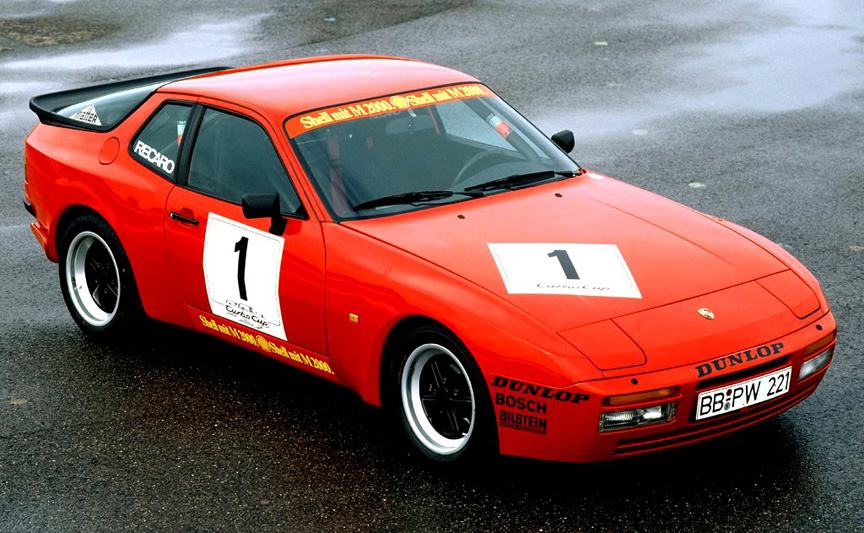

 1986 944 Turbo Cup car – the only year with narrow axles, Fuchs wheels and stock bonnet © Porsche
1986 944 Turbo Cup car – the only year with narrow axles, Fuchs wheels and stock bonnet © Porsche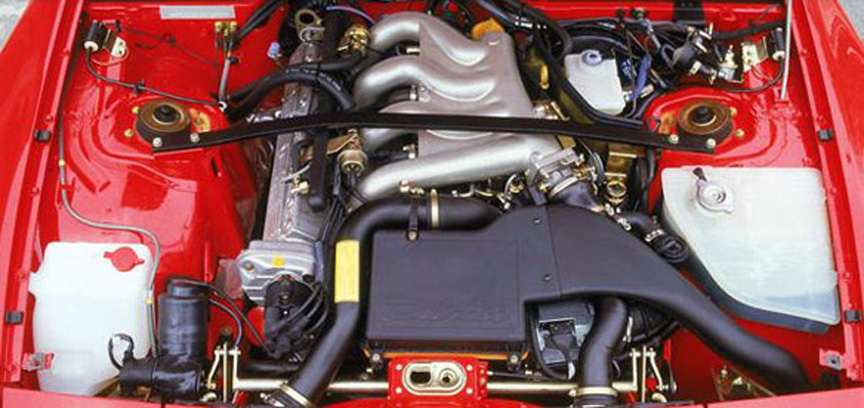

 Almost stock except the magnesium intake manifold and strut bar © Porsche
Almost stock except the magnesium intake manifold and strut bar © PorscheOn June 1, 1986, the first race of the Canadian Rothmans Porsche 944 Challenge was held. It was the second Porsche one model series launched – just 5 weeks after the 944 Turbo Cup in Germany. The 944 Challenge was organized by the manager of Porsche Canada, David Deacon, a former racing driver. 30 cars started in the race.
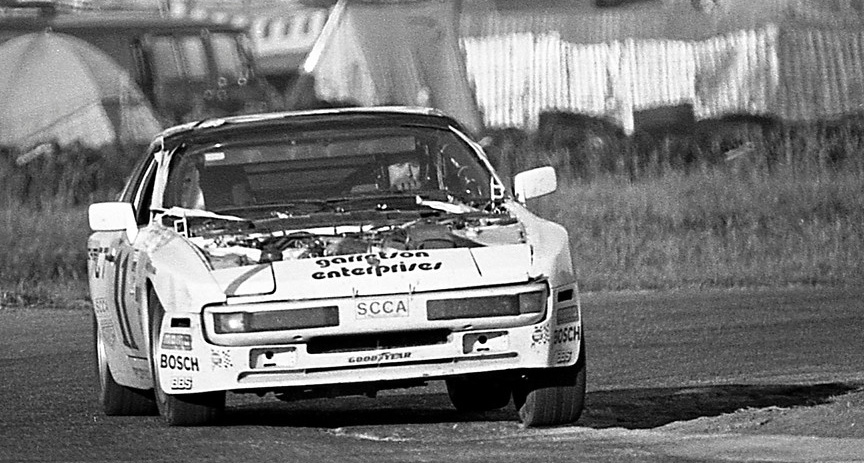

 1986 June 29, Longest Day of Nelson 24 hour race, Carlsen Racing 944 of Paul McIntosh/Bruce MacInnes/Larry Bleil, winners of GT class © Mark Windecker
1986 June 29, Longest Day of Nelson 24 hour race, Carlsen Racing 944 of Paul McIntosh/Bruce MacInnes/Larry Bleil, winners of GT class © Mark WindeckerOn June 1, 1986, the first race of the Canadian Rothmans Porsche 944 Challenge was held. It was the second Porsche one model series launched – just 5 weeks after the 944 Turbo Cup in Germany. The 944 Challenge was organized by the manager of Porsche Canada, David Deacon, a former racing driver. 30 cars started in the race.
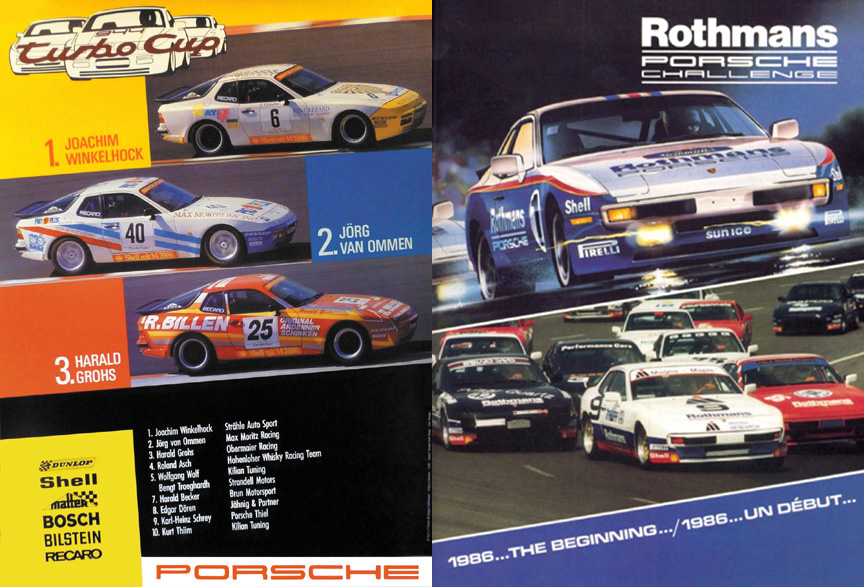

 1986 944 Turbo Cup Germany was won by Joachim Winkelhock, followed by Jörg van Ommen and Harald Grohs. 1986 Canadian Rothmans Porsche 944 Challenge was won by Kees Nierop (#86 on the poster). Very close runner-up was Richard Spenard who won the championship a year later. © Porsche
1986 944 Turbo Cup Germany was won by Joachim Winkelhock, followed by Jörg van Ommen and Harald Grohs. 1986 Canadian Rothmans Porsche 944 Challenge was won by Kees Nierop (#86 on the poster). Very close runner-up was Richard Spenard who won the championship a year later. © PorscheIn 1987, the 944 Turbo Cup championship was also started in France. The 1987 944 Turbo Cup cars were equipped with new KKK turbochargers producing 184 kW (but engine code of the Cup car remained M44.51, the code of the 162 kW version). In addition to the engine power increase, the 1987 Cup cars got many other improvements. The 1987 model year had brought the wider axles and ABS. In addition, the Cup cars received front brakes from much heavier Porsche 928 S4. The new Cup suspension had front struts with adjustable height and harder springs, at the rear were coil springs in addition to torsion bars. The cars also got rigid rear axle mounts, Bilstein shock absorbers and thicker anti-roll bars (front 27 mm, rear 21 mm). The new 16″ Cup wheels had the Phone Dial design, but were forged from magnesium and an inch wider (8″ front, 9″ rear). The Dunlop SP Sport D40 Cup slicks at the front were 245/45-16 and 255/45-16 at the back (rain tyres were 225/50 and 245/45). Cars also got larger oil sumps, now made of magnesium. The 1987 Cup bonnet was made of GFRP (glass-fibre reinforced plastic) and had external fasteners. Although the 1987 Cup cars were built with catalytic converters (build code M298), these were removed for the French series (the French Cup cars ran with just a pipe from the turbocharger until the end of the car). The engines had 6 month (full season) warranty. The cost of the Cup car was similar to the street car.
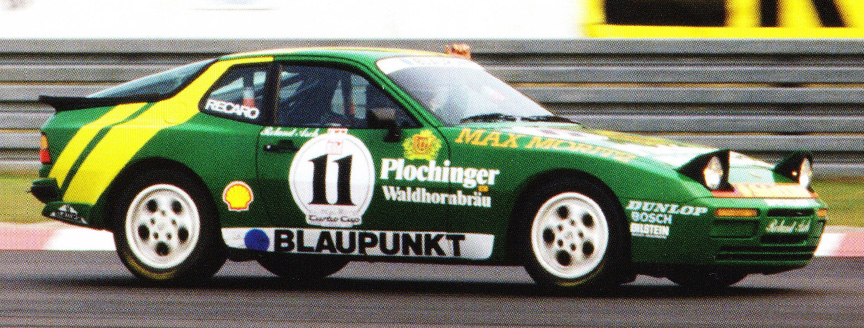

 1987 Cup cars got wider axles and new offset wheels forged from magnesium © Porsche
1987 Cup cars got wider axles and new offset wheels forged from magnesium © Porsche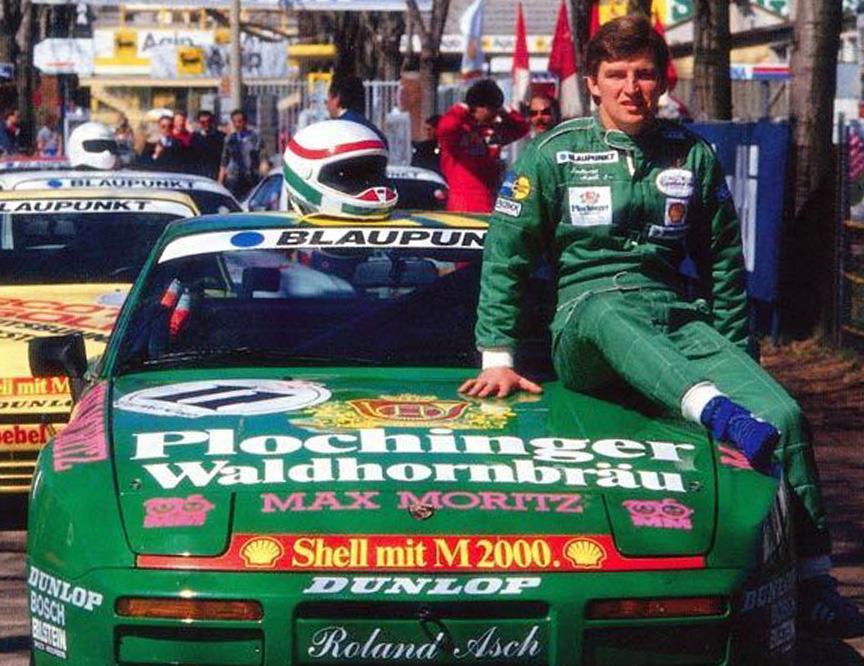

 Roland Asch with his 1987 944 Turbo Cup Germany winning car (he would also win in 1988 and 1989)
Roland Asch with his 1987 944 Turbo Cup Germany winning car (he would also win in 1988 and 1989)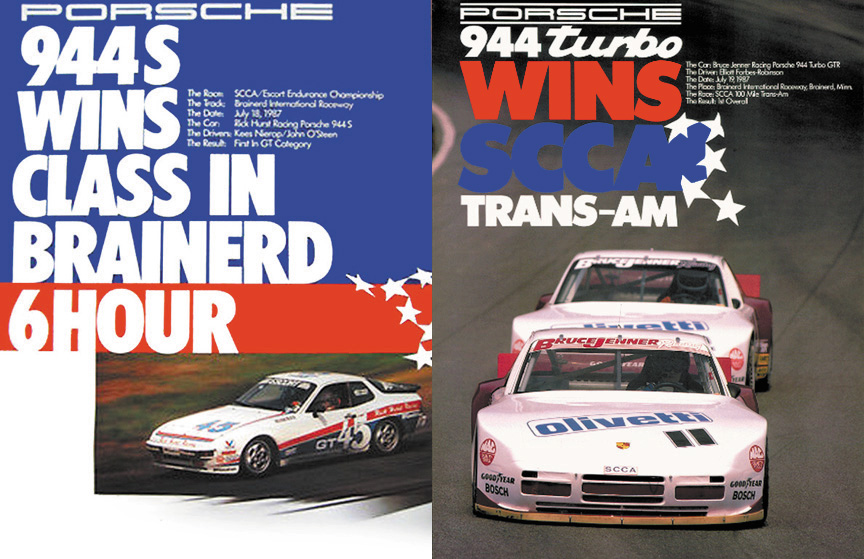

 1987 Brainerd International Raceway, July 18: SCCA Escort Endurance GT-category winning 944S of Kees Nierop/John O’Steen, July 19: The only Trans Am race won with 944 GTR (Elliott Forbes Robinson driving chassis no. 944-005). For marketing reasons the poster reads “944 turbo”.
1987 Brainerd International Raceway, July 18: SCCA Escort Endurance GT-category winning 944S of Kees Nierop/John O’Steen, July 19: The only Trans Am race won with 944 GTR (Elliott Forbes Robinson driving chassis no. 944-005). For marketing reasons the poster reads “944 turbo”.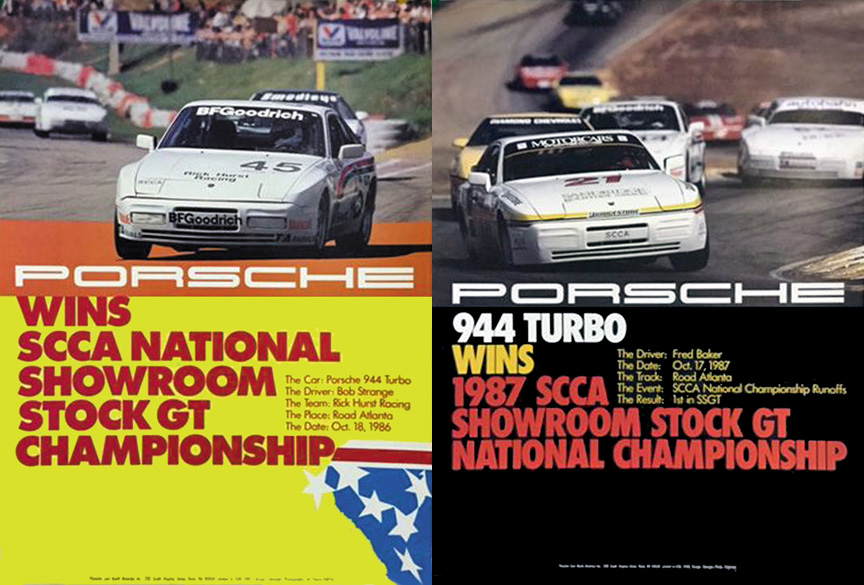

 944 Turbo racing posters: SCCA SS (Showroom Stock) GT winners: 1986 Bob Strange, 1987 Fred Baker
944 Turbo racing posters: SCCA SS (Showroom Stock) GT winners: 1986 Bob Strange, 1987 Fred BakerIn Germany the 944 Turbo Cup was replaced by the Carrera Cup (911 964) for the 1990 season, in France 944 Turbo Cup was continued for one more year. Old cars were used, but they got 213 kW power kits installed by Dany Snobeck (for comparison, the 1990 Carrera Cup Germany 911s had 195 kW).

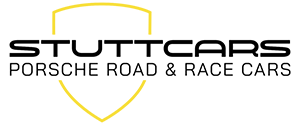
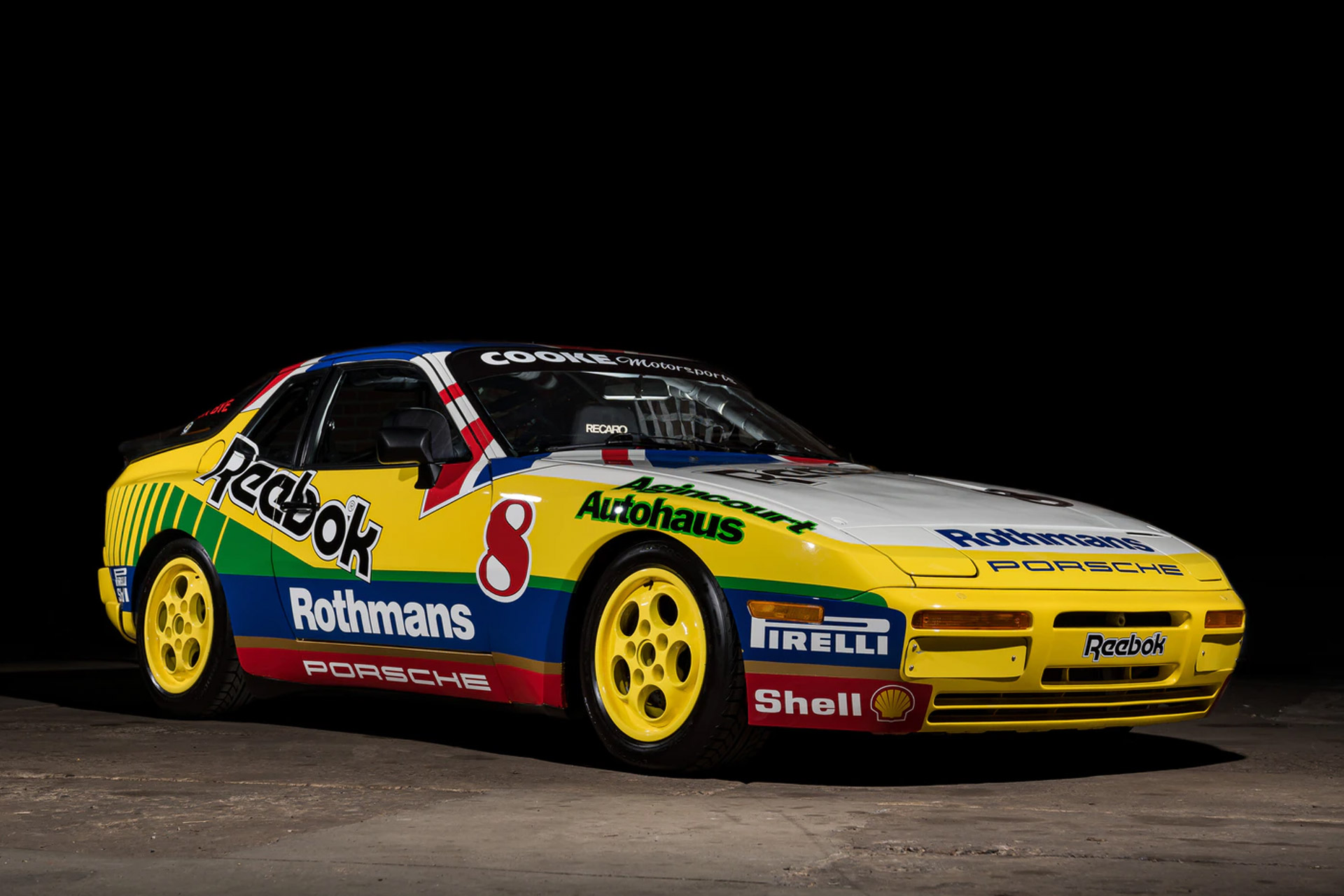
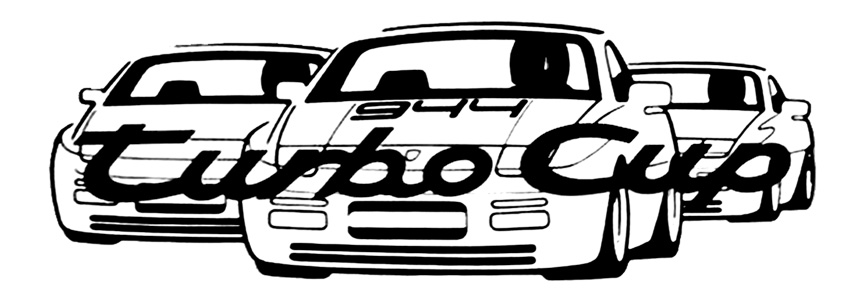
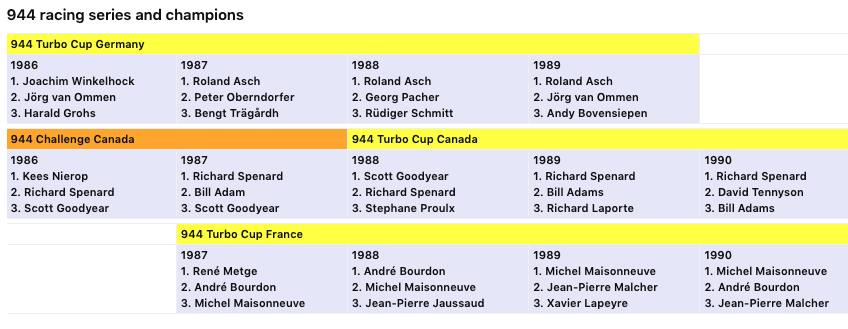
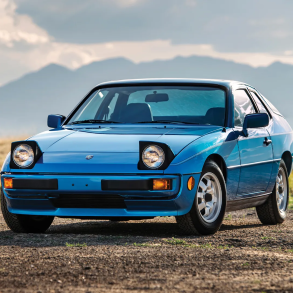
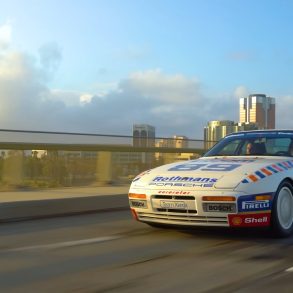
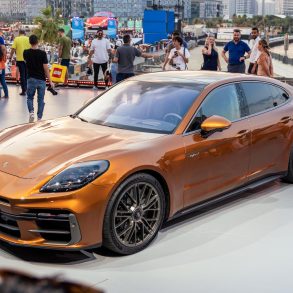
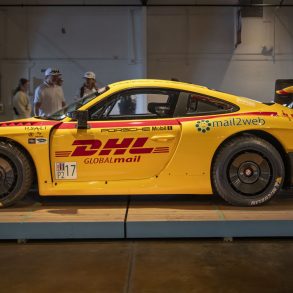
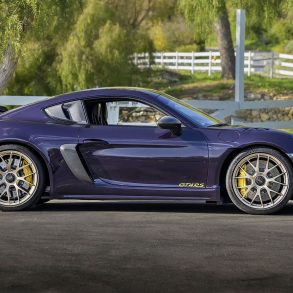
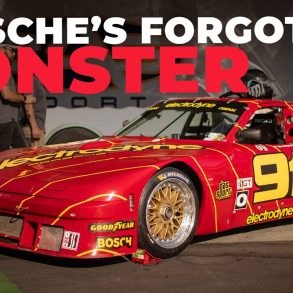
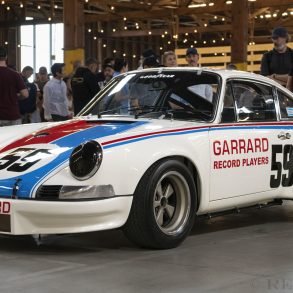
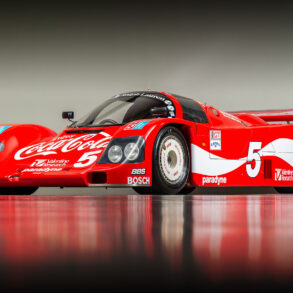
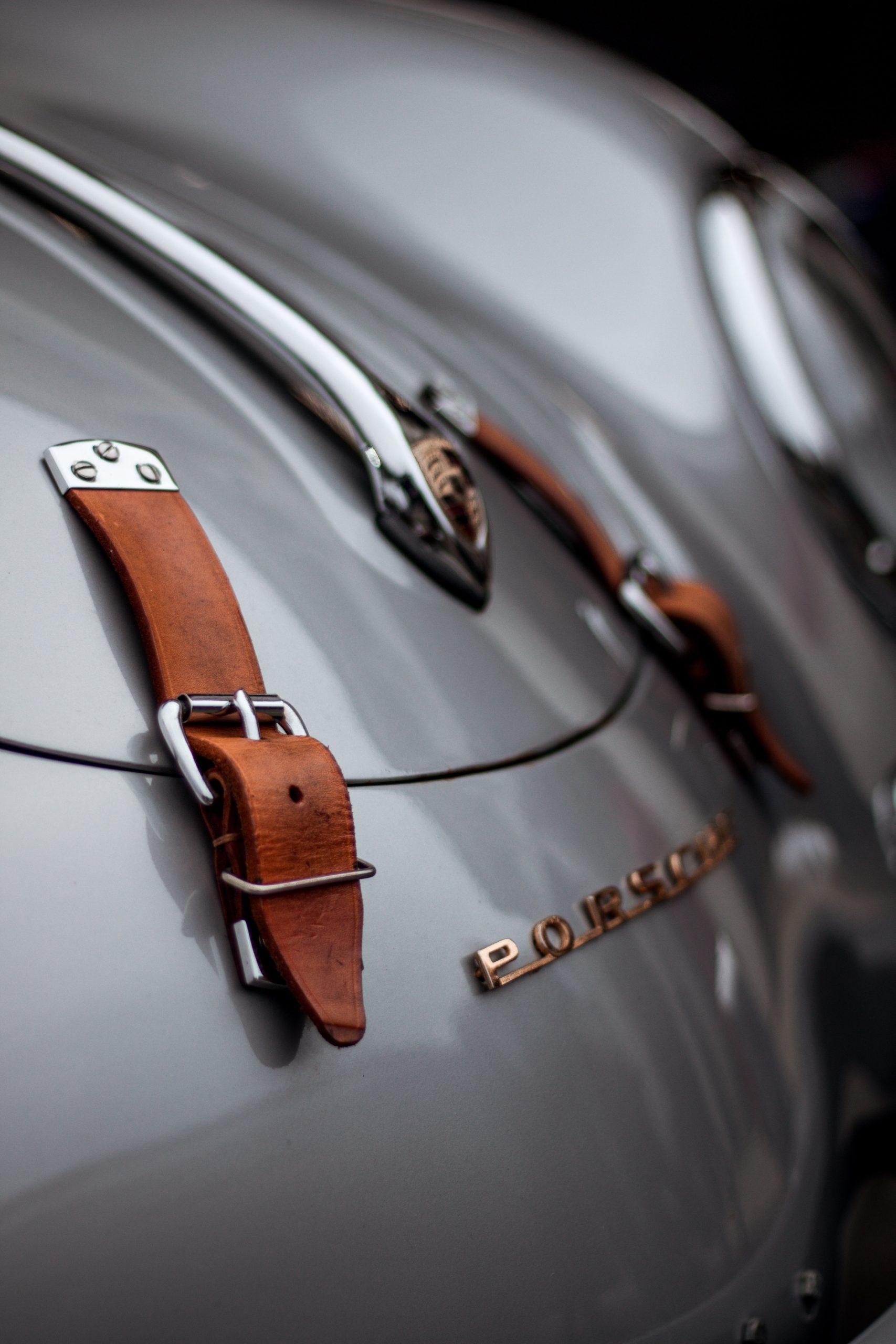
What about the 11 Escort Series 951 Cup cars?
0